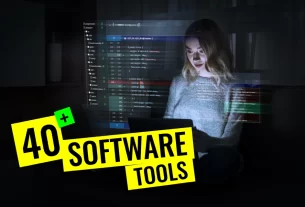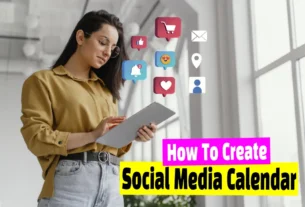Do you have the best product business idea, and want to start a business, but short on cash? Check out these tips, and examples to kick off your great business idea without breaking the bank.
If you have the entrepreneurial mindset, you will be definitely asking yourself a question, how to start a business with no money?
If this is what you are asking for then you are in the right place.
Coming up with a business idea is just the beginning; the real challenge is funding it.
Having a brilliant idea but lacking funds doesn’t mean your entrepreneurial journey has to end. You can still start a business with little to no money.

Keep reading to learn how to bootstrap your business with minimal cash.
The aim?
To start earning money that you can reinvest later. From validating your idea to making your first dollar, here’s how to start a business without any money.
Contents
- 1 How To Start a Business With No Money?
- 1.1 8 Steps to Starting a Business With No Money:
- 1.1.1 1. Choose a free business idea
- 1.1.2 – Try Dropshipping:
- 1.1.3 – Start a Service Based Business:
- 1.1.4 – Start a Print-On-Demand Business:
- 1.1.5 – Start Handcrafted Goods:
- 1.1.6 – Sell Digital Products:
- 1.1.7 – Become a Social Media Influencer:
- 1.1.8 2. Write a business plan
- 1.1.9 3. Embrace the entrepreneur community
- 1.1.10 4. Choose a business name
- 1.1.11 5. Create a brand
- 1.1.12 6. Launch a website
- 1.1.13 7. Validate ideas with preorders
- 1.1.14 8. Source funding to grow
- 1.2 Final Thoughts
- 1.3 Frequently Asked Questions (FAQs)
- 1.1 8 Steps to Starting a Business With No Money:
How To Start a Business With No Money?
Starting a business can be an exciting journey when you have enough money. But, this all changes when you have no money and want to start a business.
To make it simple for you we have 8 steps that you can adopt and start your startup business today.
8 Steps to Starting a Business With No Money:
Choose a free business idea
Write a business plan
Embrace the entrepreneur community
Choose a business name
Create a brand
Launch a website
Validate ideas with preorders
Source funding to grow
1. Choose a free business idea
The first step in starting a new business is coming up with an idea. If you’re eager to become a business owner but don’t have any savings or other funding, here are six creative business ideas you can start with no money.
Read more: 50 profitable best family business ideas
– Try Dropshipping:
Dropshipping is a popular way for entrepreneurs to start a small business without any money.
This low-cost startup idea lets you sell products without having to keep them in stock. You only pay for inventory when you make a sale, and the suppliers will even ship the products directly to your customers.
“As a master’s degree student, I didn’t have much extra money, so I decided to learn how to dropship,” says Zaid Shahatit, founder of Fighthaus, a workout apparel and equipment store.
To succeed with dropshipping, start by finding trending products from a dropshipping supplier. Then, use free marketing methods like search engine optimization (SEO) to attract customers.
– Start a Service Based Business:
The easiest way to start a business with no money is to sell your services. Even if you’re not an expert, think about the things you can do better than most people.
“Since you don’t have the capital yet, start with what you already have, like your experience, knowledge, skills, and any resources you own,” says Kei Nishida, owner of Japanese Green Tea Co.
Turn your skills and resources into a service business, such as:
Freelance writing
Virtual assistant services
Social media marketing
Handyman services
House cleaning
Dog walking
Personal shopping
Bookkeeping services
– Start a Print-On-Demand Business:
If you don’t have money to invest in inventory, consider starting a print-on-demand business.
Print-on-demand services let you add your branding and designs to products like tote bags or t-shirts and sell them one order at a time.
“We started with a print-on-demand service, which meant our initial operational investment was $0. Essentially, we were just a website at first to see if the idea would work,” says Katheriin Liibert, co-founder of the European clothing brand #muhoov.
Like dropshipping, starting a print-on-demand business has low costs. You don’t have to worry about storage, and you can test how popular your products are before investing in other types of manufacturing.
– Start Handcrafted Goods:
Prefer a more hands-on way to start a small business? Turn your hobby into a side hustle by selling handmade goods through your online store and marketplaces like Etsy.
You can make and sell items like:
Artwork
Crafts
Jewelry
Skincare products
Woodworking projects
Handmade clothing
Harry Doull, co-founder of Keap Candles, used crowdfunding to start his subscription-based candle business while working a full-time job. Keap quickly grew into a well-known brand, allowing Harry and his business partner to focus entirely on their hobby-turned-business.
A business you start with no money doesn’t have to stay small. Reinvest your earnings to help it grow. “Most of our profits have been reinvested in inventory and advertising.
We’re trying to grow at a healthy pace so that we don’t have to rely on outside investments,” says Francois Mathieu, co-founder of Hojicha Co.
– Sell Digital Products:
You can create and sell digital products with just an internet connection, making it an excellent way to start an online business without any money.
Begin with a popular topic, create some useful content, and turn your ideas into digital products like:
Ebooks
Online courses
Worksheets or templates
Photography presets
The great thing about digital products is that they are scalable. You create a product once and can sell it over and over on platforms like Shopify using the Digital Downloads app. It’s no surprise that many entrepreneurs use digital products to earn passive income.
– Become a Social Media Influencer:
To become an influencer, start by growing your presence on a popular social media platform like Instagram or TikTok. Once you have a few thousand followers, you can make money without any upfront investment by exploring these options:
Affiliate marketing: Promote products from your favorite brands and earn a commission when your followers buy them.
Sponsored content: Get paid to collaborate with brands that want to reach your audience.
Selling merchandise: Create merchandise with your brand name, logo, or catchphrase and sell it through your social media store.
Emma Chamberlain began posting videos on YouTube in 2017 and quickly gained a massive following. Just two years later, she used her internet fame to launch her first direct-to-consumer business, Chamberlain Coffee.
2. Write a business plan
A business plan is like a roadmap for growing your business. While the details will be specific to your business, it should generally cover these key areas:
Company description: Provide an overview of your business, including your business model and legal structure.
Business model: Decide on your business structure, such as LLC, C corp, S corp, B corp, or sole proprietorship.
Market research: Identify the demographics of your target market. Will you sell directly to consumers or through wholesalers? Compare this to your competitors.
Products and services: Describe what you will sell and explain why people will want to buy it.
Marketing strategy: Outline how you will promote your business to reach your target market. This could involve social media, business marketing, advertising, or email marketing.
Logistics and operations plan: Explain how you will deliver your product or service to customers. This could involve dropshipping suppliers, third-party logistics companies, or shipping items yourself.
Financial plan: Detail how you plan to earn and spend money. Include your financial needs, costs, expenses, balance sheet, and cash flow projections.
3. Embrace the entrepreneur community
Many entrepreneurs start their businesses with just a small amount of money. Connecting with other self-made business people can provide valuable free advice on how to succeed on a budget.
You can find other entrepreneurs by:
Attending networking events
Signing up for virtual and in-person conferences
Joining online networking groups
Finding a business mentor
4. Choose a business name
The next step in starting a business is picking a name. Your name should be catchy, easy to remember, and, most importantly, not already used by someone else.
Keep in mind: The name you pick will stick with your business for a long time. Choose one you really like—and make sure it won’t hold you back if you want to grow or change direction later.
After you’ve found a name you’re happy with, make sure to grab matching online stuff like:
A domain name. Like BRAND.com
Social media usernames. Like facebook.com/BRAND
5. Create a brand
Now that you’ve got a business name, you’re getting closer to creating a brand.
But a brand is more than just a name or logo. It includes things like:
What your business stands for and its mission
How it looks, like colors and fonts
The style of photos you use
How you talk to people
How you hire
Your business story
As a business owner, your brand guidelines will help shape your strategy as you grow. A strong brand guides how you do social media, who you hire, and how you talk to people. You can create a brand for free using tools like Shopify’s logo maker.
Read More: How to write a business strategy?
6. Launch a website
Although you can manage your business solely on social media, having a simple website is like having a home base for your online visitors and all your stuff.
You can create a complete website with cool features, like themed product pages, a checkout, and a blog, for just $29 a month. This is great for telling people about your products and brand.
If you’re thinking about selling online but don’t need a whole store, you can get the Shopify Starter plan for just $5 a month. It comes with extra selling features for platforms like TikTok, Instagram, and other social media, and lets you make sales through email, text messages, and in person.
7. Validate ideas with preorders
If you don’t have enough money upfront to fill up a storage room with products, you can still run your business by using a preorder system.
Taking pre-orders means you get paid before making the products. It’s also a good way to build excitement about your new brand.
Remi Martins came up with the idea for Natural Girl Wigs while working a full-time job.
She started by creating an Instagram page to show off the wigs she wanted to sell. “I found out people were interested in the product, especially those who love natural hair,” she says.
Remi worked with a hairstylist to make her product and launched it through pre-orders. “We sold 50 products in the first 60 days,” Remi says. “Later on, I invested $1,000 to buy more products and advertise.”
8. Source funding to grow
Once you’ve confirmed that your business idea works and you’re making money, you can put that money back into your business. You might also think about getting a small business loan, finding investors, or running a crowdfunding campaign.
If your small business doesn’t succeed, it’s often because of money problems. That’s why many entrepreneurs try to get more startup money—money they can use for things like buying more products, advertising, or hiring staff.
Here are some ways to get money for your new business:
Shopify Capital: Shopify can give you money to help your store grow and keep your best-selling products in stock.
Small business loans: Borrow large amounts of money from a lender to pay for things like salaries, buying products, or advertising.
Investors: You can get money from investors who want a share of your business.
Grants: Sometimes, you can get a one-time payment of money for your small business. Usually, you don’t have to pay this money back.
Alicia Ho started her photography business, Precious Ones Photography, with no money after people noticed her photos of her kids. “Friends and family liked my work, so I started taking photos for clients and making some money,” Alicia says.
When Alicia wanted to grow her business, she discovered a local nonprofit that provided loans and scholarships for young entrepreneurs. “It was the perfect move for my business,” she says.
Final Thoughts
Here’s the most important thing to take away from this guide: You don’t have to have money upfront to start a business.
Lots of entrepreneurs have built successful businesses from the ground up, often without any outside funding. Having a great idea, being committed, and having that entrepreneurial drive can take you further than you might realize.
Frequently Asked Questions (FAQs)
What is the easiest business to start with no money?
Dropshipping is a super simple way to start a business without needing any money upfront. You only pay for the products when someone buys them, so there’s no need to worry about storing stuff or making a ton of products in advance. Because it’s all online, you can run your business from home and still make money.
What business can I start without capital?
Print on demand is a cool way to start an online business without needing any money upfront. You can design your own stuff for free using online tools, and then use a service like Printful to put your designs on things like shirts or mugs. You only have to pay for making the products when someone actually orders them. There are other businesses you can start without any money upfront too, like doing social media marketing, writing for other people, or offering different kinds of services.
How much does it cost to start a business?
Starting a business can cost a little or a lot, depending on what kind of business you want. Some businesses need a bunch of money upfront for stuff like renting a store, but others just need you and your computer. You can totally start your own business without any money using ideas like dropshipping, print on demand, or selling digital stuff.


